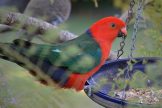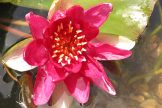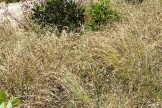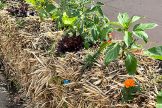
There is something very soothing about the sound of frogs singing to each other in your garden. Making a pond that will attract and sustain frogs and tadpoles isn’t all that hard, as long as you keep a few important things in mind. A frog pond is a great project to undertake with the kids, why not give it a go next school holidays? Read on for all you need to know.
When you build your pond ensure that you create a variety of water depths. Position the pond where it will receive full sun as well as some shade. (Aim for 50% of each if possible). Create an organic layer at the bottom of the pond with straw or leaf litter and provide structural habitat like sticks and logs beside the pond. These will provide some protection and help the frogs gain access to the water. Fill the pond with water and wait 3 days for it to settle.
After a month you can add fish, but they MUST be fish that won’t eat tadpoles or eggs. The Australian Smelt Fish is a good example. Goldfish are a definite no-no. An aquarium will be able to help you with fish selection. It can take days or even months. for frogs to come, you will need to be patient. Remember it is illegal to remove frogs or tadpoles from their natural habitat. This prevents the spread of the deadly Kitrid fungus and ensures genetic diversity of the species.
Add a range of plants from the categories below to the pond and surrounds.
 Important note about plant availability. Important note about plant availability.There are hundreds of factsheets on our website provided for your information. Not all plants will be available at all times throughout the year. To confirm availability please call (03) 8850 3030 and ask for the nursery. |
Floating
Nardoo (Marsilea drummondii)
Swamp Lily (Ottelia ovalifolia)
Blunt Pondweed (Potamogeton ochreatus)
Floating Burr-reed (Sparganium subglobosum)
Water-Ribbon (Triglochin procera)
Eel Weed (Vallisneria spiralis)
Emergent
Milfoil (Myriophyllum crispatum)
Water-Ribbon (Triglochin procera)
Tall Spike-rush (Eleocharis sphacelata)
Submergent
Milfoil (Myriophyllum crispatum)
Curly Pondweed (Potamogeton crispus)
Swamp Lily (Ottelia ovalifolia)
Tall Edge Plants
Tall Sedge (Carex appressa)
Short-stem Sedge (Carex breviculmis)
Thatch Saw-sedge (Gahnia radula)
Rush (Juncus sp.)
Small Loosestrife (Lythrum hyssopifolia)
Small Edge Plants
Matted Pratia (Pratia pedunculata)
Angled Lobelia (Lobelia alata)
Swamp Goodenia (Goodenia humilis)
Swamp Mazus (Mazus pumilio)
Prickfoot (Eryngium vesiculosum)





